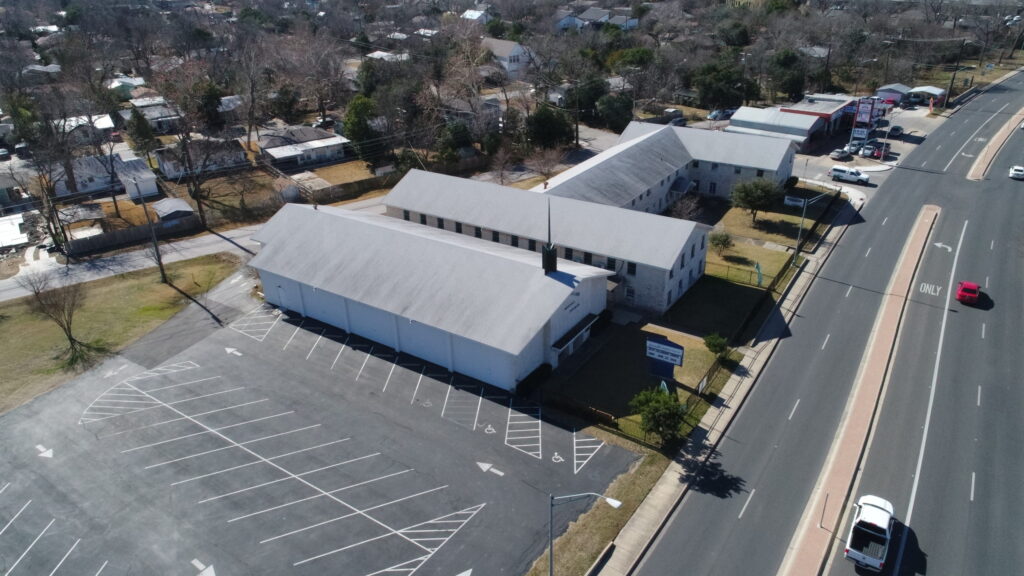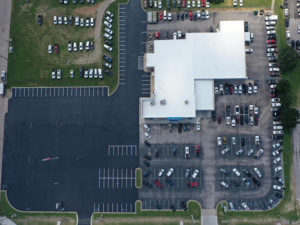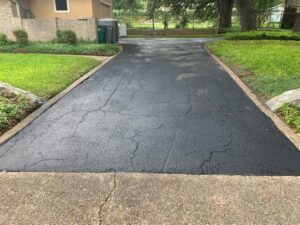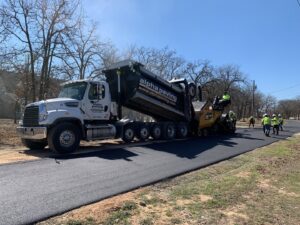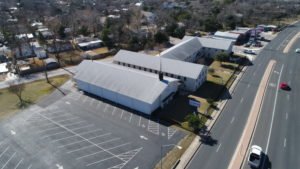
Sealcoating in Austin, TX and Central Texas is a highly effective and very economical way to protect asphalt pavement from the ravages of the sun as well as damages caused by automotive fluids and other chemicals. If sealcoating fails prematurely, your asphalt pavement will be left without the protection it needs to achieve its maximum life. Understanding the common causes of sealcoating failure can help you ensure that your sealcoating professional applies the sealant correctly.
Sealcoating: Failures & Causes
Although there can be many reasons for sealcoating to fail, an overwhelming number of failures are caused by inadequate preparation of the pavement prior to the application of the sealant.
• The surface of the pavement must be as clean as possible. This means that dirt, grass cuttings, loose gravel and other debris must be removed. Unless the surface is clean, the sealant will not be able to form a strong bond with the pavement and will quickly begin to peel or flake. The type of cleaning depends on factors specific to the pavement, but it may be as simple as pressure washing or cleaning it with compressed air. At other times, the contractor may need to use wire brushes or scrapers.
• Sealcoating cannot bond to petroleum-based automotive fluids. Oil stains need to be cleaned thoroughly, and they may need to have a primer applied prior to sealcoating. Furthermore, the contractor needs to make sure that the oil has not damaged the pavement; if it has, the area should be patched before a sealant is applied.
• The pavement should be repaired before sealcoating. Cracks should be filled or sealed, alligatored asphalt may need to be replaced and potholes must be repaired. Sealcoating can cover tiny, superficial cracks, but it is a coating rather than a repair product.
• Sealcoating should not be applied until the new pavement has had time to lose its excess oil. This is normally about 90 days, but when the weather is cool and humid, the pavement may need additional time to age prior to the application of a sealant.
• Old, powdery or highly oxidized pavement may still be structurally sound and able to benefit from sealcoating. However, these pavements may need to have a primer or tack coat applied prior to sealcoating.
• Tree sap on the pavement can interfere with the bonding process and cause sealcoating to flake in spots where the sap lies underneath the sealant. The pavement underneath overhanging tree branches should be scrubbed or power washed to remove the sap.
• Areas of the pavement that receive heavy use, including the entrances and exits of parking lots, may develop aggregate that is smooth, polished or slick. The surface needs to have enough texture for the sealcoating to form a strong bond. Areas with polished aggregates may need to have a special primer applied to ensure bonding.
The best way to avoid asphalt sealcoating failure is to choose a contractor with extensive experience and an outstanding reputation — such as Alpha Paving. We are an asphalt paving company in Austin, Tx and we lead the industry for the most gallons of sealcoating applied annually in the state of Texas. In addition, we offer asphalt paving and overlays, asphalt repairs, milling, parking lot striping, concrete work, speed bump installation and parking lot signs. We are known for the exceptional results we deliver and our professional customer service. If you would like to request a free quote, you can submit the online form or call (512) 677-9001.


